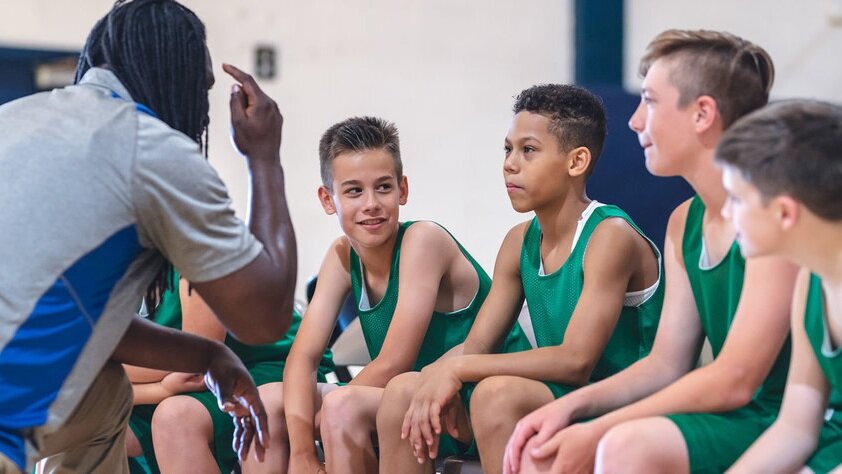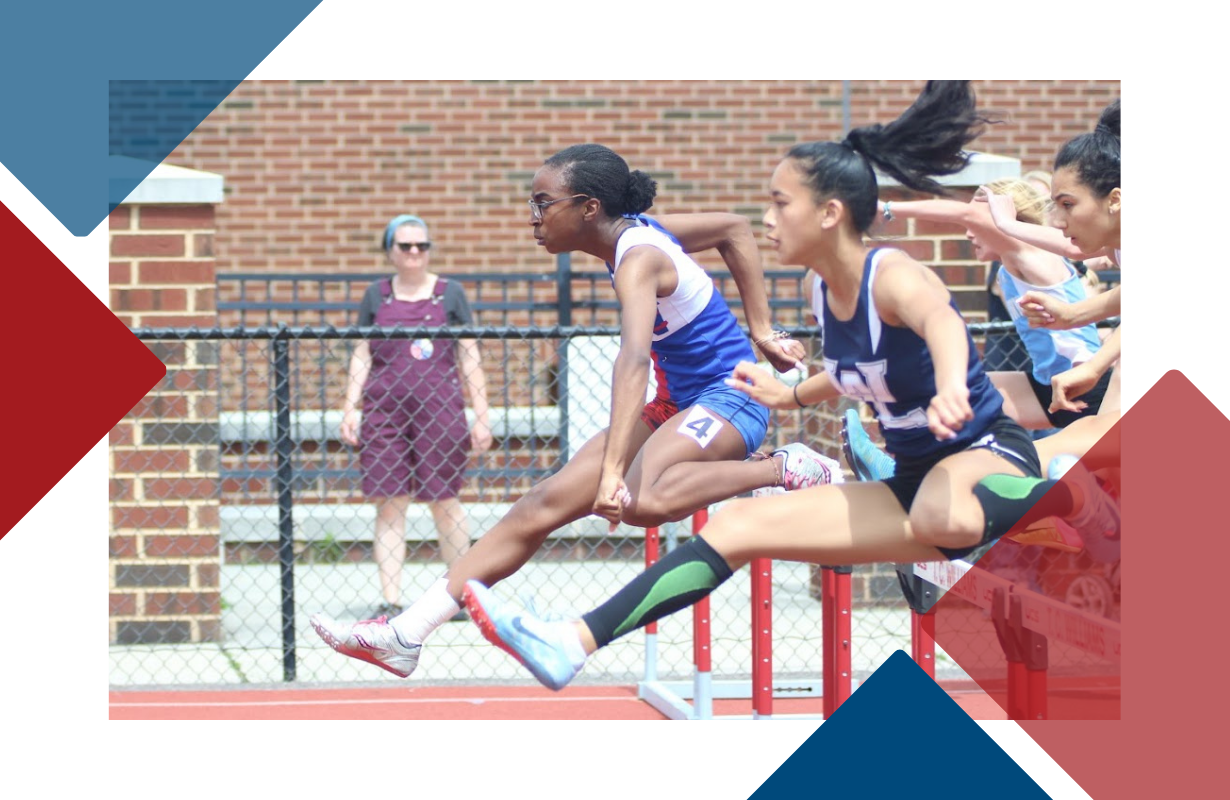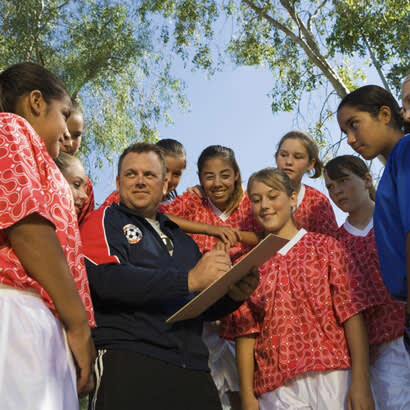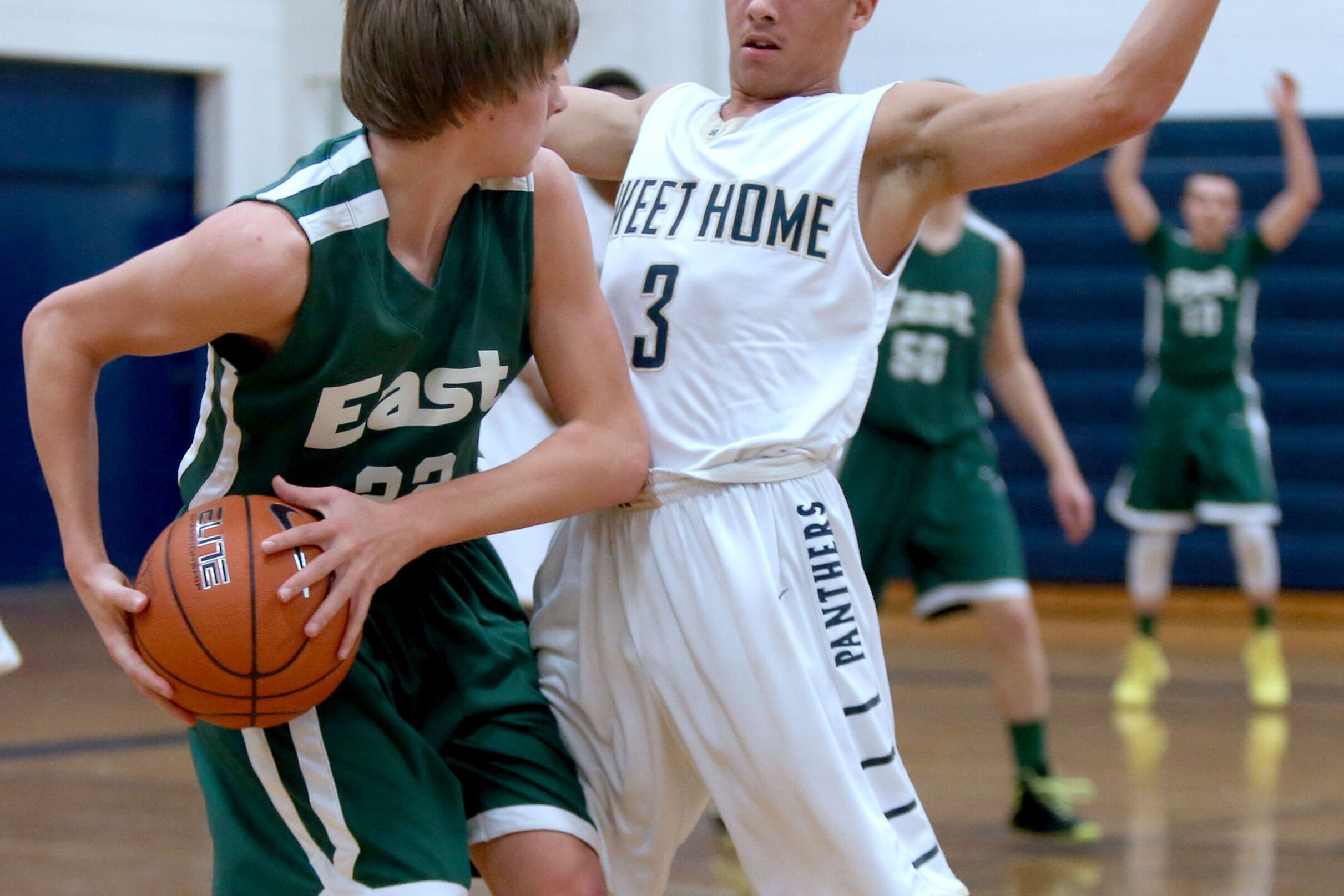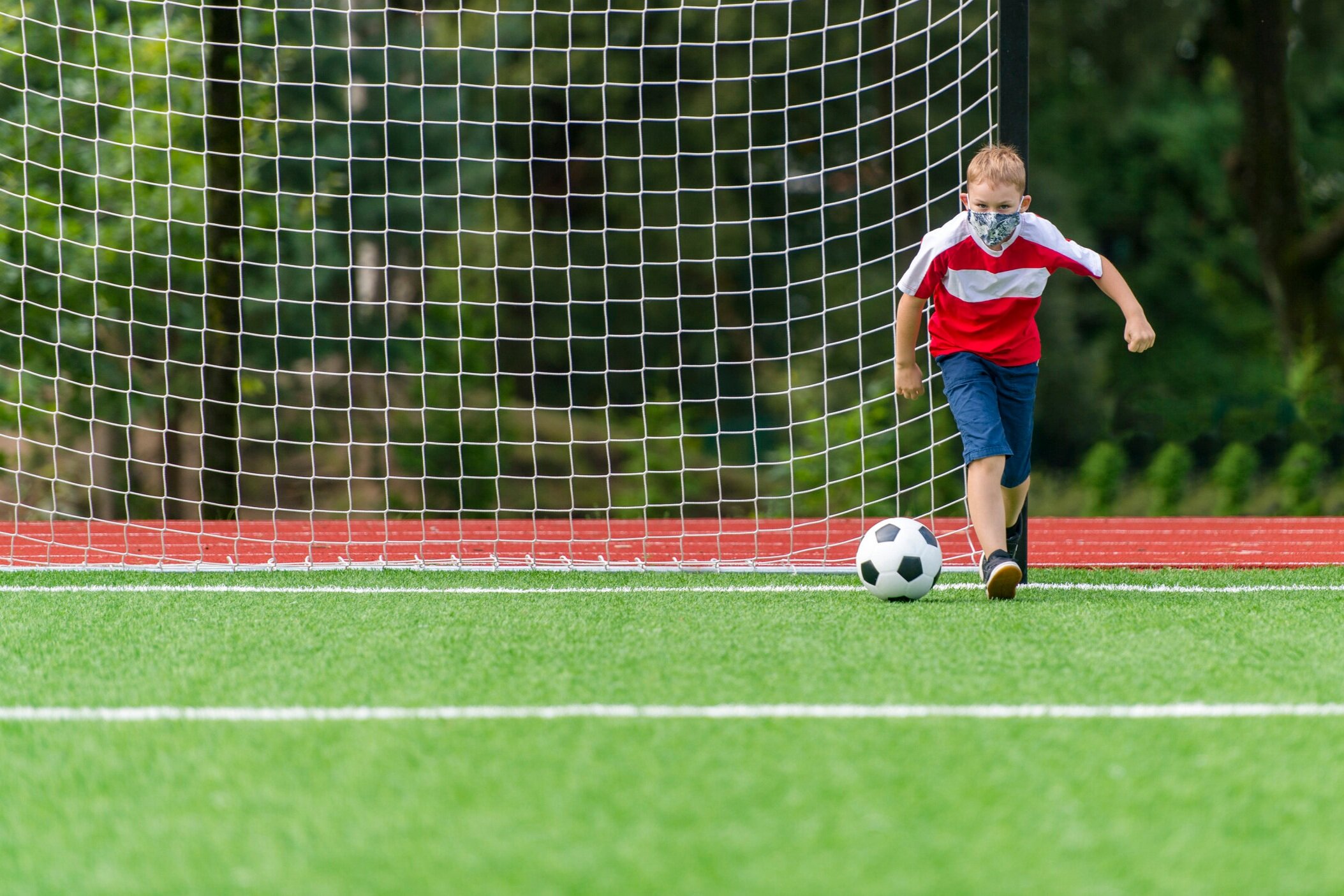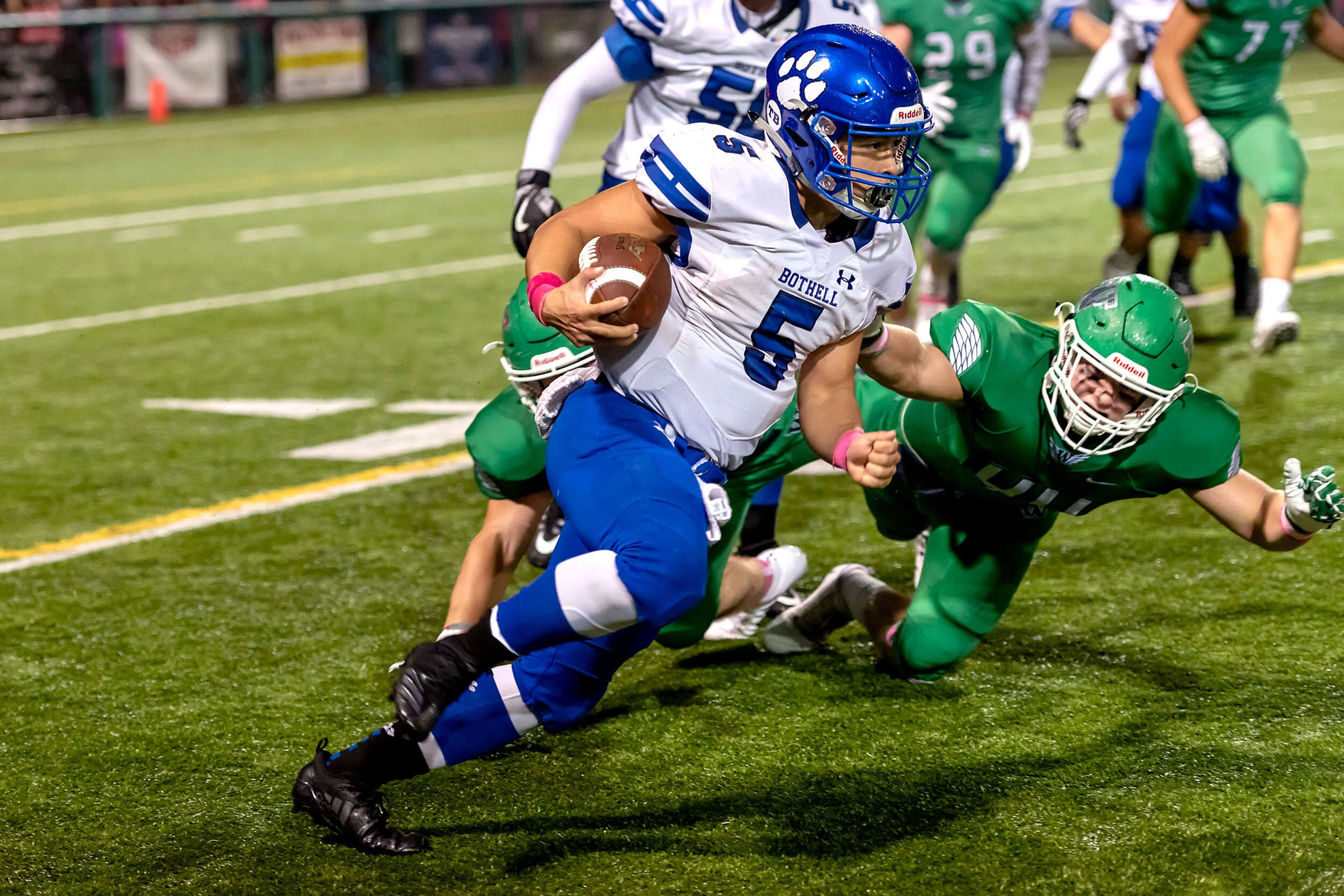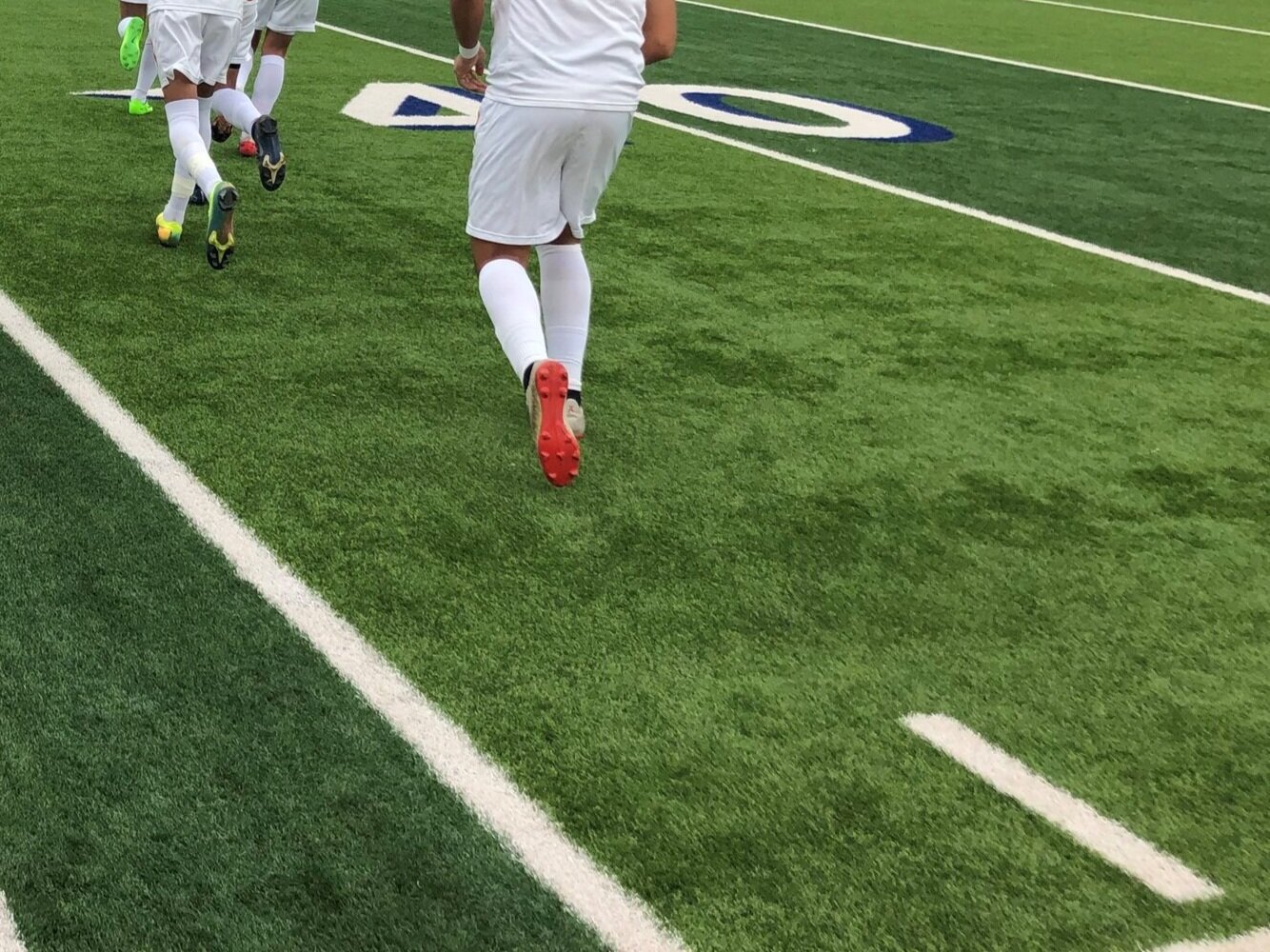When the COVID-19 pandemic hit in March 2020, the Aspen Institute’s Project Play immediately helped leaders, coaches and parents adjust. We held webinars with health and sports experts, wrote articles examining the trends and impact, created resources and answered reader questions to help navigate the uncertainty, and surveyed parents about their child’s experiences during the pandemic.
This Coronavirus & Youth Sports page is now an archived page, with only our articles being periodically updated in the Posts section below. Visit www.ProjectPlay.us for our current work.
FREQUENTLY ASKED QUESTIONS
- Should Youth Play Sports Now?
- Should kids wear masks when playing sports?
- Are indoor sports allowed now?
- How Can Parents Keep Kids Physically Active If Schools and Sports are Closed?
- What are ways that youth can emotionally cope with the loss of sports?
- What can adults do now to prepare for when games return?
SHOULD YOUTH PLAY SPORTS NOW?
First and foremost, this depends on what state and local public health experts are advising. Is your state having a downward trend of positive tests or document cases over two weeks? Is your state able to conduct robust contact tracing and surveillance testing of asymptomatic people in vulnerable populations? What is your community’s bed capacity at local hospitals given that the healthcare system is under immense pressure? Answers to those questions will go a long way in deciding whether to play now.
Pandemic fatigue is very real at the worst possible time for youth sports – entering indoor sports season (basketball, volleyball, wrestling, hockey). This is a period when we can’t let our guard down with the virus. Caseloads and hospitalizations are higher than they were even at the beginning of the fall sports season, or in March and April when all sports were cancelled.
“What that means is that the likelihood of one or more players arriving at practice or a game asymptomatically infectious is substantially greater than it was several months ago,” said Dr. Neel Gandhi, a professor of infectious diseases, epidemiology and global health at Emory University. “That means we are adding one more component of elevated risk (greater community transmission) to another risk (playing contact sports indoors). It makes for a very concerning scenario in settings like youth sports, high schools and many colleges, especially since testing daily or multiple times a week is not feasible.”
If local conditions allow for safe play, many health experts advise to play sports in a phased approach. Reintroducing games immediately, especially travel sports, means mixing kids in new environments and increasing the exposure of players and adults. Instead, start with individual practices in small numbers so teams can slowly phase in new behaviors that will be needed for competition, said Lauren Sauer, a COVID-19 response experts at Johns Hopkins Medicine. But given how much the virus is spreading this winter, “my message is skip sports now so you can play them for the rest of your life,” Sauer said. “If the NFL, with daily testing and all of the resources at their fingertips, can’t keep COVID out while playing and practicing outdoors, do we really think youth teams can while indoors?”
On Oct. 29, the CDC released updated return to play considerations that continue to advise in part that “youth sports teams should consider competing only against teams in their local area,” such as within their neighborhood, town or community. The CDC says the risk of COVID-19 spread increases in youth sports settings as follows:
Lowest risk: Performing skill-building drills or conditioning at home, alone or with family members
Increasing risk: Team-based practice
More risk: Within-team competition
Even more risk: Full competition between teams from the same local geographic area
Highest risk: Full competition between teams from different geographic areas
The CDC advises that sports requiring frequent closeness between players “may make it more difficult to maintain social distancing. … For close-contact sports (e.g., wrestling, basketball), play may be modified to safely increase distance between players.” For instance, teams could focus on individual skills, participate in full contact only in game-time situations, and decrease the number of competitions in a season.
The age of the child has to be factored into what returning to sports looks like. The CDC says that older youth may be better able to follow directions for social distancing and take other protective actions, such as not sharing water bottles. The CDC adds: “For younger athletes, youth sports programs may ask parents or other household members to monitor their children and make sure that they follow social distancing and take other protective actions (e.g, younger children could sit with parents or caregivers, instead of in a dugout or group area.”
Maintaining healthy sports environments are critical. The CDC says it’s necessary to clean and disinfect frequently touched surfaces on the court, field or play surface at least daily, or between uses as much as possible. The CDC offers tips on how to clean and disinfect facilities and recommends using an EPA-registered household disinfectant.
The CDC says that the virus gets spread most frequently among close contacts within about six feet — a distance that is hard to create in team and some individual sports. Transmission of the virus occurs much more commonly through respiratory droplets and “does not spread easily” by touching surfaces or objects, according to the CDC. “It may be possible for COVID-19 to spread in other ways, but these are not thought to be the main ways the virus spreads,” the CDC says.
Youth sports organizations need policies for what happens if someone at an event or practice gets sick or tests positive later. Sauer stresses that public health authorities must be contacted when a new case is found, but many health departments are overwhelmed and have very limited capacity or success to do contact tracing. Transparency and clear communication with the public is vital. Remember, about half of all COVID-19 cases are asymptomatic.
Children appear to be less likely than adults to suffer severe complications from the coronavirus, according to the CDC, though it remains unclear whether youth with underlying conditions are at elevated risk. There’s still much that is not known about the virus. Doctors in the U.S. and Europe have called a mysterious new pediatric illness that appears linked to COVID-19 "deeply concerning." Instead of attacking the lungs like the new coronavirus disease does in adults, this syndrome, while seemingly very rare, can trigger serious and even deadly cardiac complications in kids.
The greater concern, said Dr. Andrew Stolbach, an emergency physician and faculty member at Johns Hopkins University School of Medicine, is that youth will become a carrier for the virus and pass it on to their parents, grandparents or coaches. Several state and county public health departments around the country have linked COVID-19 outbreaks to youth sports events.
“I wouldn’t recommend opening youth team practices, and certainly not youth competitions with spectators, until we have demonstrated that we have the virus under control,” said Stolbach, who is a youth wrestling coach. “We shouldn’t even open schools until a given area has demonstrated that cases are decreasing and hospitals can offer tests and treatment to all who need those services. Youth sports should be a lower priority than schools, because they present most of the same risks without all of the same societal benefits.”
SHOULD kids wear masks when PLAYing SPORTS?
Increasingly, the answer by health experts is yes. On Dec. 4, the American Academy of Pediatrics posted updated guidance on young people and sports in the pandemic, making a strong recommendation that participants should wear face masks for all indoor sports. Masks for most outdoor sports are also encouraged. The AAP made exceptions only for swimming and diving, since it’s hard to breathe through wet masks; during gymnastics and cheerleading, where masks could get caught or obstruct vision; and in wrestling, where masks could be a choking hazard.
“Any cloth face covering that becomes saturated with sweat should be changed immediately,” the AAP wrote. “Athletes should always wear a cloth face covering when between practice drills, while not on the playing field, on the sidelines, arriving at or departing from the playing facility, in a locker room, and during shared transportation to/from an event. It is important that the cloth face covering fits the athlete well and is worn over the nose and below the chin at all times when in use. If the cloth face covering is removed for a break, the athlete should remain at least 6 feet away from all other individuals.”
The AAP had issued previous guidance on youth sports but this revision strengths the mask recommendations for those engaged in vigorous exercise. Dr. Susannah Briskin, a member of the AAP council on sports medicine and fitness executive committee, told The New York Times that in states with mandated masks for all sports, “athletes tolerated the change very well — most people take a couple of practices to find a mask they can work out in. The first time, people may find it to be an annoyance; by the second or third, they don’t notice.”
States like Massachusetts and Maine now require athletes to wear masks during competition (other than water sports). The AAP guidance on masks goes farther than the CDC recommendations, which call for masks to be worn by coaches, youth sports staff, officials, parents and spectators as much as possible. “Face coverings may be challenging for players (especially younger players) to wear while playing sports,” the CDC says.
Are indoor sports allowed NOW?
It’s a mixed bag across the country. As of early December 2020, more states were temporarily pausing sports due to spikes in COVID-19 cases, hospitalizations and deaths. The National Governors Association tracks updated youth sports policy documents for each state. To see the policies, click here and scroll down to the section titled “NGA Education’s State Reopening Tracking.”
As of early December, 20 of 51 state high school associations intended to start basketball seasons on time, according to the National Federation of State High School Athletic Associations. Only 12 state high school associations planned no changes to their wrestling season. The CDC and many health experts advise that playing indoors requires good ventilation systems because the virus is known to spread more inside. “Increase circulation as much as possible, for example by opening windows and doors,” the CDC said. “Do not open windows and doors if doing so poses a safety or health risk (e.g., risk of falling or triggering asthma symptoms) to players or others using the facility.”
Many indoor hockey rinks in the Northeast were shut down in late October/early November 2020 after regulators linked COVID-19 cases to organized hockey. The sport has been outbreaks in states such as Connecticut, New Jersey, Georgia, Florida and Massachusetts. The CDC studied a case from Tampa, Florida, where a recreational hockey game left 13 people with positive tests. The report documented how close contact and intense physical activity at an indoor event can cause an outbreak, concluding that an ice rink is “likely well suited” for transmission. Scientists are trying to study hockey-related outbreaks for clues about the ideal conditions in which the coronavirus thrives, and how to stop it, according to The Washington Post.
Getting physical activity is still important for physical and mental health. “Outdoor-recreation classes and individual activities such as walking, running, hiking, and cycling are safe,” wrote former CDC Director Dr. Tom Frieden in The Atlantic. “Well-ventilated gyms – with universal masking (yes, masks with face shields can be worn even while engaging in vigorous physical activity), strict cleaning protocols, and physical distancing – may be able to stay open.”
How can parents keep kids physically active if schools and sports are closed?
Sara Poehlman, a nurturing care expert who works on emergency education and parent programs, stressed that children must move to ensure their physical and mental well-being. “Especially if children are doing distance learning via computer, movement in between periods of study is essential to ensure focus, concentration, and sustained attention,” she said.
CALLING ALL
COACHES
Project Play has updated our Calls for Coaches report with tips and checklists for coaches to support their young athletes’ social and emotional well-being during physical distancing.
Physical routine recommended by Poehlman includes running around the block, jumping jacks, yoga, or a dance party. Screen time may seem like a solution to keep children occupied, but it can be detrimental to their mood and energy when used for a prolonged period of time, she said. Poehlman recommends short intervals of screen time (no binge watching) and to select content that motivates physical activity (dance like a YouTube star) or reinforce learning themes and skills.
“Boys and girls need free, unstructured time for play,” Poehlman said. “If they do have worries, play can be a strategy to work them out. If possible, small groups of children could get together for social learning and play.”
Dr. Neeru Jayanthi recommends playing in the yard or basement, doing individual activities such as running, riding bikes or playing tennis in an isolated environment. “Do not perpetuate mass gatherings in the hope we can wish away this virus,” he said.
Keep in mind ways to help all kids access physical activity. Gaps have grown, with sports becoming less accessible to lower-income youth, according to September 2020 research by the Aspen Institute and Utah State University. Children living in a household making $100,000 or more spend more than two hours additional time on sports each week during the pandemic than a child in a home under $50,000. That gap was less than one hour before COVID-19. While kids from all incomes have spent less time on sports now, having wealth seems to buffer a child’s loss of hours in free play, practices and games.
The pandemic accelerated trends toward at-home, virtual training. But after an initial rush online, the amount of time spent on such training has increased only 7% since the shutdown, according to the Aspen Institute/Utah State survey of youth sports parents. Families making under $50,000 are seeing slighter increases in virtual training compared to wealthier families. Boys spent more time on virtual training before COVID-19; now girls are using it slightly more frequently than boys.
-
Active for Life
Activities for Kids
Backyard games that build physical literacy -
Alliance for a Healthier Generation
Keeping Kids Physically Active at Home
and
Fitness Breaks
Ideas for keeping kids active, including guided videos hosted by pro athletes -
BOKS
At Home
Resources to stay healthy and active while schools are closed, including daily Facebook Live classes -
DC SCORES
#SCORESATHOME
Soccer - and writing! - activities for grades 3-8 -
Health.gov
Move Your Way
Tools, videos, and fact sheets for adults and parents with tips that make it easier to get a little more active -
Hip Hop Public Health
H.Y.P.E. at Home
Videos, comics, and music to lead dance breaks -
Hospital for Special Surgery
Sports Safety Learning Center
Online P.E. classes for grades 3-5, 6-8, and 9-12 -
King County Play Equity Coalition
Family & Programmatic Resources for School Closure
Apps, videos, and websites to promote physical activity for kids -
Nick Helps
An updating library of video resources and activities for children -
Playworks
Play at Home
Games and live-streamed recess sessions -
Positive Coaching Alliance
Life is a Team Sport
Resources for coaches, including a free 60-minute course for athletes 12-18 -
Rising New York Road Runners
Stay Active at Home
Activity guides for students, parents, and PE teachers -
SportsEngine
At Home Family Health & Fitness
Sport-specific drills, ideas for physical activity, and parent resources to be done at home -
TeamSnap
How to Train at Home
At-home workouts and resources -
Up2Us Sports
#Up2UsSportsAtHome
Resources and trainings for youth sport coaches -
US Soccer Foundation
Soccer for Success at Home
Weekly short video sessions for kids to learn soccer skills -
USTA Net Generation
Tennis at Home
Tennis skill-building and exercise videos
What are ways that youth can emotionally cope with the loss of sports?
This has been, and will continue to be, a very difficult and disruptive time for all youth. For those children who play sports, the loss may be even greater and could contribute to higher anxiety and depression.
“The way athletes cope with life is through their sport,” said Dr. Rob Bell, a sport psychology coach. “If sport is okay and we are performing well, then life more easily works itself out. It is when we have severe on-the-field or off-the-field issues that cause our stress levels and anxiety to spike. You’ll need to treat this crisis as a major loss and/or death because the emotions experienced will be similar.”
Bell said that athletes will probably experience sadness, mood swings, or lack of initiative – and that’s normal. The key is to recognize there is nothing wrong with you and allow some time and space every day to grieve. “The worse thing is to simply ignore the emotions you’ll feel because then they will pop up when we least want them to,” Bell said.
Athletes are creatures of habit and crave structure and discipline. So, practice self-care. Keep consistent sleeping schedules. Continue exercising. Eat well and stay hydrated. Maintaining a structure to stay healthy will help avoid athletes going on huge binges of screen time or eating unhealthy food.
Athletes should also stay connected with others virtually. “If I am able to focus on helping someone else out, someone less fortunate, or even connecting with a friend, then I am no longer dwelling on my own problems and circumstance,” Bell said. “If I can focus on others, then the person I am really coaching up is myself.”
Coaches and parents can help too. Positive Coaching Alliance has tips to help young athletes socially and emotionally during the pandemic.
Shaina Ross of the U.S. Soccer Foundation said coaches must recognize different experiences for different kids. “Access to things like food and the internet can’t be ignored if we expect to connect with players, so you need to be flexible,” Ross said. “Meet your players where you are by asking questions of what they need.”
That also means talking honestly with players about COVID-19. “Children are processing this trauma every day and that shouldn’t be avoided or glossed over,” Ross said. “Don’t pretend everything is perfect. … Take the time to process your own emotions and practice self-care. Young people take cues from you.”
Coaches can:
Organize Google hangouts as a way for teammates to connect.
Encourage players to communicate about individual workouts they are performing to keep each other motivated.
Consider having their team watch a sports movie and then come together virtually to discuss the lessons learned.
Parents can:
Set up routines (schoolwork in the morning, “recess” in the backyard) to help normalize the situation as much as possible.
If it allows, play with your child in the sport of their choice in the backyard or driveway, or practice certain skills and drills within the home if possible.
The U.S. Center for SafeSport has created guidelines for coaches, parents, and athletes to use technology safely. For example:
- For coaches: Keep physical safety in mind when suggesting home workouts or training routines.
- For parents: Maintain open lines of communication with your child and pay attention to their emotional state.
- For athletes: Understand the privacy settings of the apps and websites you are using.
And remember, if you’re an athlete, “be courageous about asking for help,” according to PCA. If you are feeling overwhelmed, anxious, fearful or depressed, let one of the adults you trust know. Be honest with them. Don’t hesitate to ask for help for fear that your concerns aren’t important.
What can adults do now to prepare for when games return?
If your season is on hold, chances are you’re pretty frustrated. No one likes sitting still. The reality is we may continue to face a lot of starts and stops to organized sports. Take advantage of this time. It’s a valuable opportunity for parents, coaches and administrators to learn new skills and knowledge that better serve young athletes.
Parents can:
Reintroduce free play. The pandemic brought a reprieve for some to the never-ending hectic sports schedules while eating dinner in the car. With organized sports on hold, take advantage of this time by encouraging your child to creatively enjoy sports (while maintaining appropriate social distancing). Project Play’s Reintroduce Free Play page offers tips. NBA star Trae Young’s #InHouseChallenge has upped the ante of what you can do while inside. Let kids play on their own terms, and they will.
Reexamine your own balance with sports – and that of your child’s. This is a good time to take a deep breath. Talk to your child, and think to yourself, about what he or she is getting out of sports. Is your child having the best experience possible? Have you followed your child’s lead and asked what he or she wants? The Project Play Parent Checklists can help you navigate the often confusing world of youth sports. If your child is specializing in one sport all year, check out the Healthy Sport Index for other sport options to help avoid overuse injuries and burnout while supplementing skills in your child’s primary sport.
coaches can:
Get yourself trained in coaching kids. A good coach sees the potential in every child. Yet only about three in 10 youth coaches have been trained in the past year. It’s not easy finding time as a volunteer. Take time now to become a better coach at preventing and treating injuries, teaching age-appropriate skills, and communicating in the best way to youth. Even if you’ve been trained previously, online courses such as these provide a great refresher and the ability to learn more.
How to Coach Kids (via Project Play, Nike and U.S. Olympic & Paralympic Committee)
Develop a plan to teach personal growth in athletes. Coaching can’t focus solely on skill development on the field. Many parents sign up children for sports largely to develop them as better people first and foremost. Use Project Play’s Calls for Coaches checklist to create strategies for a team atmosphere that promotes social and emotional learning.
administrators can:
Recruit more coaches and in new places. Research shows youth benefit from role models they identify with, but their coaches are mostly men from upper-income homes. Many organizations struggle to find volunteers. Only 24% of youth coaches are female. What’s the key to getting more women and young adults into the mix? Watch our Project Play Summit session for tips.
Prepare to have to grow registration. It’s very likely that when games do return, fewer kids will be registered for sports than when we left. This could create significant financial challenges for youth sports providers. Educate yourself from past Project Play Summit videos on ways to grow participation. You’ll need to think outside the box, such as considering the value of mixed-gender play and inclusive environments to teach core skills necessary to build a just and kind society. Learn from communities on how they are responding to an environment in which the divide between the sport haves and have-nots has grown due to COVID-19. More than ever, there’s an opportunity for your organization to appeal to parents in new ways.
Evaluate protective measures for your facility against infectious diseases. A&A Athletic Consulting has recommendations on how to protect yourself. Among the recommendations: review emergency operation plan; assess the level of readiness and contingencies related to staffing, equipment, supplies and training; distribute personal protective equipment to personnel with direct contact to the general public; provide accessibility to personal sanitation supplies for spectators; and enhance cleaning requirements before, during and after events.
Email jon.solomon@aspeninstitute.org with any questions about youth sports during the coronavirus outbreak.
Last updated: June 23, 2021




